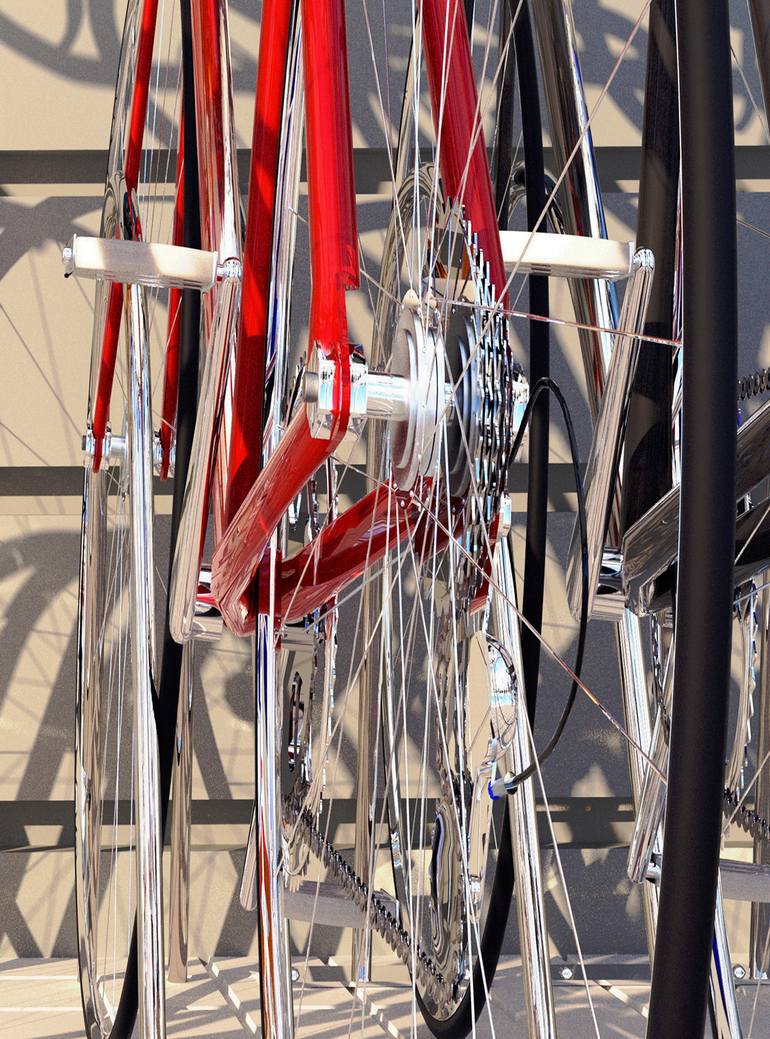


391 Views
18
View In My Room
Digital, Ink on Canvas
Size: 23.2 W x 31.5 H x 1.2 D in
Ships in a Box
$1,137
Shipping included
14-day satisfaction guarantee
Trustpilot Score
391 Views
18
Artist Recognition

Artist featured in a collection
ABOUT THE ARTWORK
DETAILS AND DIMENSIONS
SHIPPING AND RETURNS
Cada vez que veo a un adulto sobre una bicicleta, no pierdo la esperanza para el futuro de la humanidad. Every time I see an adult on a bicycle, I don't lose hope for the future of humanity. (H.G. Wells)
Year Created:
2019
Subject:
Mediums:
Digital, Ink on Canvas
Rarity:
One-of-a-kind Artwork
Size:
23.2 W x 31.5 H x 1.2 D in
Ready to Hang:
Not Applicable
Frame:
Not Framed
Authenticity:
Certificate is Included
Packaging:
Ships in a Box
Delivery Cost:
Shipping is included in price.
Delivery Time:
Typically 5-7 business days for domestic shipments, 10-14 business days for international shipments.
Returns:
14-day return policy. Visit our help section for more information.
Handling:
Ships in a box. Artists are responsible for packaging and adhering to Saatchi Art’s packaging guidelines.
Ships From:
Spain.
Customs:
Shipments from Spain may experience delays due to country's regulations for exporting valuable artworks.
Need more information?
Need more information?
Name: Juan Andrés Aguirre Vila-Coro Date of birth: November 26, 1955 Place of birth: Madrid Current address: Urbanization Caserío de Urgel nº 80, San Ildefonso Telephone and Fax: 921/47 05 65. Juan Aguirre Vila-Coro (Madrid 1955), is an architect and has reconciled this profession with other activities in the field of Plastic Arts, first as a painter with traditional techniques (oil, acrylic and airbrushing) and then dedicated mainly to digital modeling. Digital art still has a way to go to be recognized by all the artistic community first, and by the citizenship afterwards (or the order is to the reverse?). The fact that the digital artist does not hold a brush in his hand yet arouses suspicion and suspicion. "That's not art," some say. The conservatism It has always been associated with the reception of the artistic work. Evil that weighs us, we continue with the mind in the eighteenth century under the dictatorship of the Fine Arts There is a clear agreement between current hyperrealism, as an artistic orientation, and digital art, as technical modeling. The digital solution seems even more subtle to me when the artist has a long background and architectural experience. This is the case of Juan Aguirre, an eloquent example of computational hyperrealism. Critic I would say that the conception of space is one of the most interesting aspects of his artistic universe. Using the technique of «mise en abyme», where the interior extends to infinity. The specular space is presented as a huge gallery (in several paintings, from Café at sunset, 2012, to El cambio de luces, 2018) or as urban landscapes. The most explicit picture for this technique is The disturbing invisible camera, 2018. Art Critic says: "For specular reflections, we must invoke the glass (its favorite material) and the surfaces that can function as a mirror. Glass is also present in showcases and everyday objects such as bottles, glasses etc. Its translucency fascinates the artist who imagines not only huge rooms, but also large transparent sculptures in open decorative spaces. Chromatics seems to be, in its deepest option, a lesson in Piet Mondrian's abstractionism. The artist uses three primaries: blue, red, yellow, and two non-colors: black and white. Mondrian is present with two paintings (fake, of course) in the famous Juan Aguirre gallery (Reflejos pastel con dama, 2018), but also in Sinestesia, 2016, and, more discreetly, in Bufet, 2012, for example.
Artist Recognition

Artist featured by Saatchi Art in a collection
Why Saatchi Art?
Thousands of
5-Star Reviews
We deliver world-class customer service to all of our art buyers.
Global Selection of Original Art
Explore an unparalleled artwork selection from around the world.
Satisfaction Guaranteed
Our 14-day satisfaction guarantee allows you to buy with confidence.
Support Emerging Artists
We pay our artists more on every sale than other galleries.
